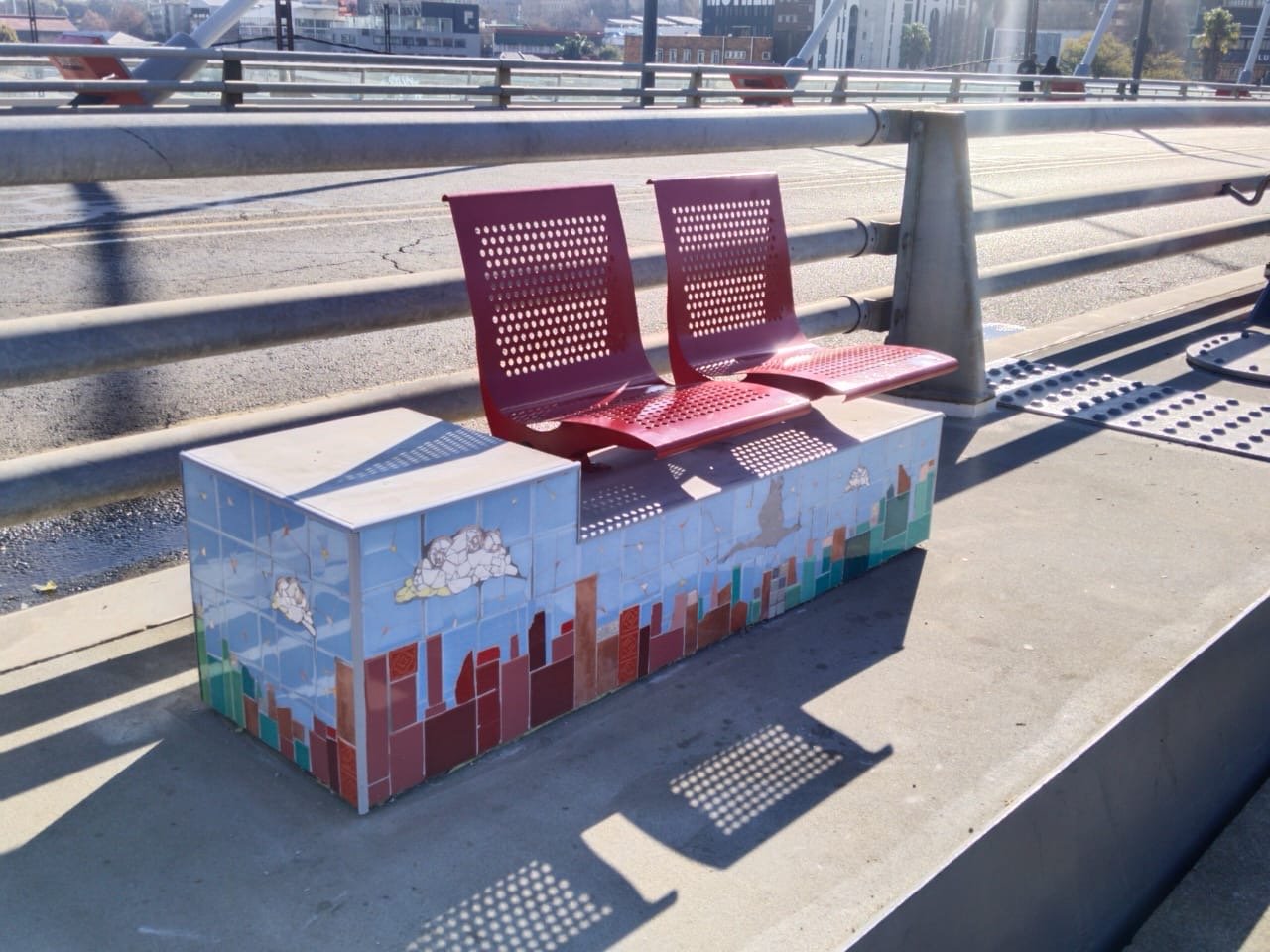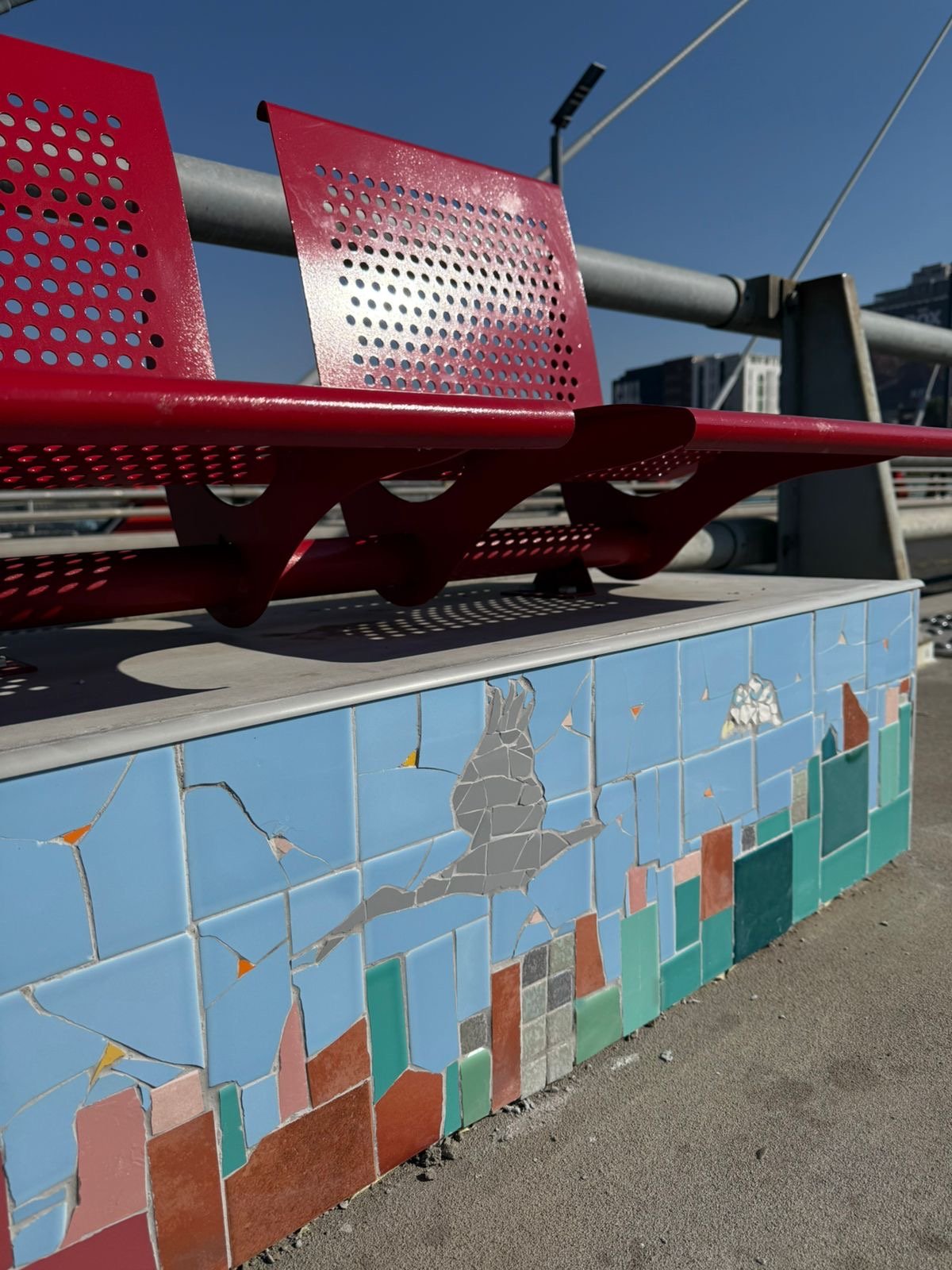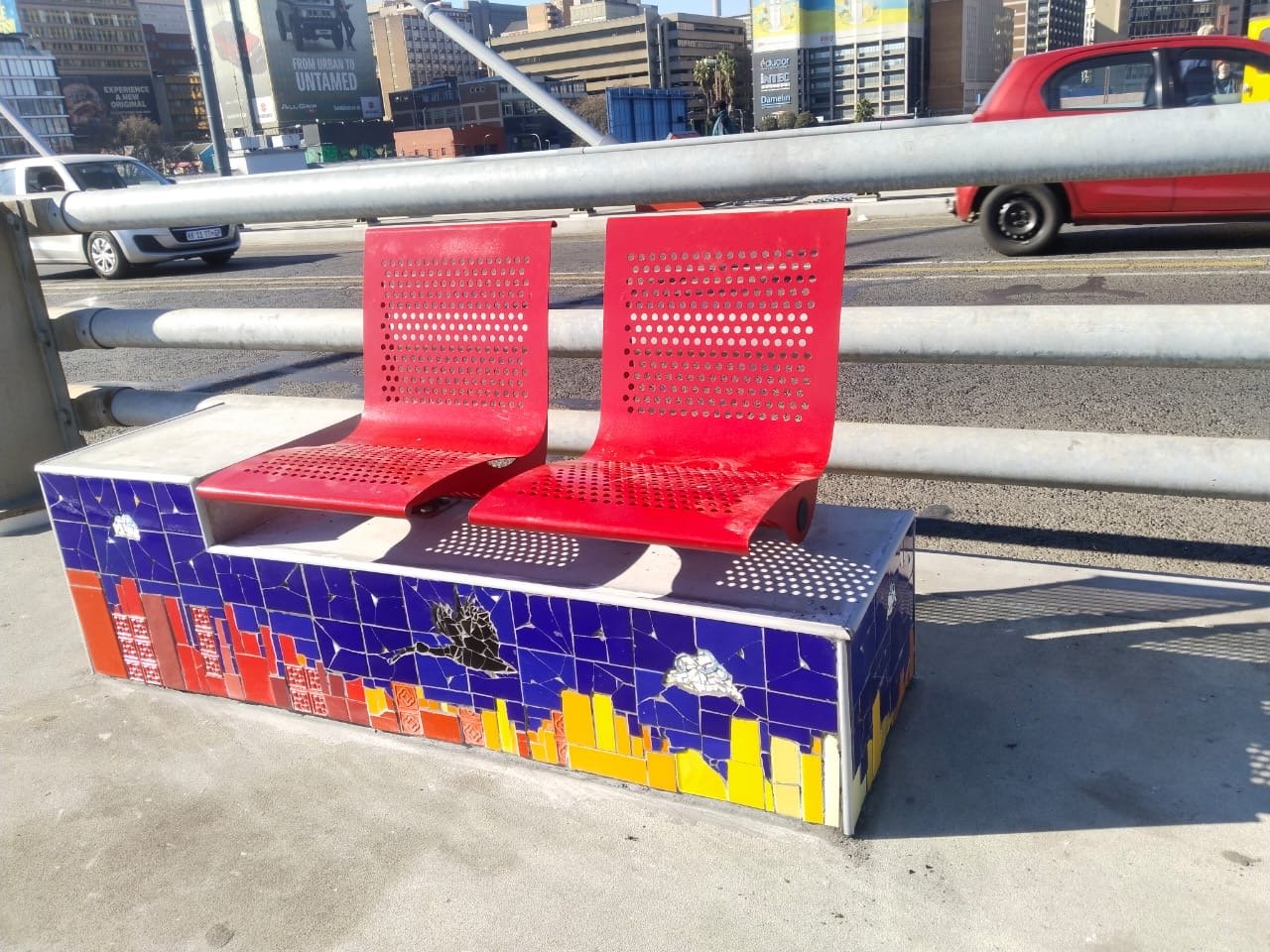The Nelson Mandela Bridge is a gateway into Joburg's City Centre, linking Braamfontein and Newtown. Yet years of city mismanagement, neglect, vandalism, and theft have tarnished this important post-apartheid landmark, named after South Africa's late President Nelson Mandela, who led the nation into democracy. Today, it holds a reputation as a place many Joburgers are rightly wary of.
A project by Jozi My Jozi (March 2024) set a hopeful new trajectory in motion, restoring the lights on the Nelson Mandela Bridge after four years of darkness. Now, the charming new benches along Nelson Mandela Bridge encourage people to stop, sit, and take in the views. To us, this reads as a challenge to the City: There are seats. Are you going to make it safe to sit on them?

This gateway project is an initiative of Jozi My Jozi – a movement dedicated to revitalising Joburg's inner city. This edition is in collaboration with MojaNation and Spaza Art Gallery. MojaNation is a placemaking, public art, and creative agency that has spearheaded numerous art installation projects around the city. Its director is artist James Delaney who, through his work in restoring The Wilds to its former glory, is no stranger to the transformative power of public art. Established by the late Andrew Lindsay (known as 'Drew') in 2001, Spaza Art Gallery likewise has a longstanding engagement with public art – born out of the belief that "art is for everyone, every day, everywhere."
Through the Spaza mosaic collective, a group of artists led by Dionne MacDonald continue Drew's legacy. They came on board to design mosaics for the base of the new benches, inspired by the morning and sunset views from the bridge. "On the west we have drawn a sky with soft pink and turquoise hues and on the east, a late dusk sky with the buildings ablaze and the reflection of a dramatic, fiery Jozi sunset. The west side of the Bridge has more feet in the morning, and the east in the evening," MacDonald explains.
The collective employed a mosaic technique of breaking tiles and filling the cracks with bits of mirror or contrasting tile colours, emulating light coming through the cracks. For MacDonald, "This speaks to this city, so full of cracks, but the cracks are filled with our teeming, inimitable creativity."

This initiative is a wonderfully imaginative departure from a lot of the more hostile architecture the city suffers from. The hope is that by creating a more welcoming atmosphere, it will have a positive, knock-on effect.
The team at MojaNation tell us, "We wanted to bring back the allure of Nelson Mandela Bridge as a destination site. The only way to move forward is by shifting mindsets from exclusion to inclusion. When people feel welcomed, involved, and represented, they’re more likely to take pride in shared spaces. It’s about encouraging collective participation and fostering a sense of community responsibility, which in turn can contribute to a safer, more vibrant environment."

It must be noted that installing this project was no easy feat – there were battles with weather, taggers, bureaucrats, and naysayers. It would have been easy to throw in the towel in the face of these negative responses or adopt the attitude that no good deed goes unpunished. "What kept us going was the instant gratification we received from passersby who stopped to admire the artwork and thank the artists for making the bridge look beautiful again," say MojaNation.
And yet it is so much more than optics. It's about contributing and supporting the efforts made to create the city we want to live in. As MacDonald says: "The Nelson Mandela Bridge is now a gleaming little corner that creates the vision for the rest of the city."
With more gateway projects planned, we'll be watching this space. Find out how you can get involved at jozimyjozi.com.


_m.jpg)
_m.jpg)
_m.jpg)


Comments